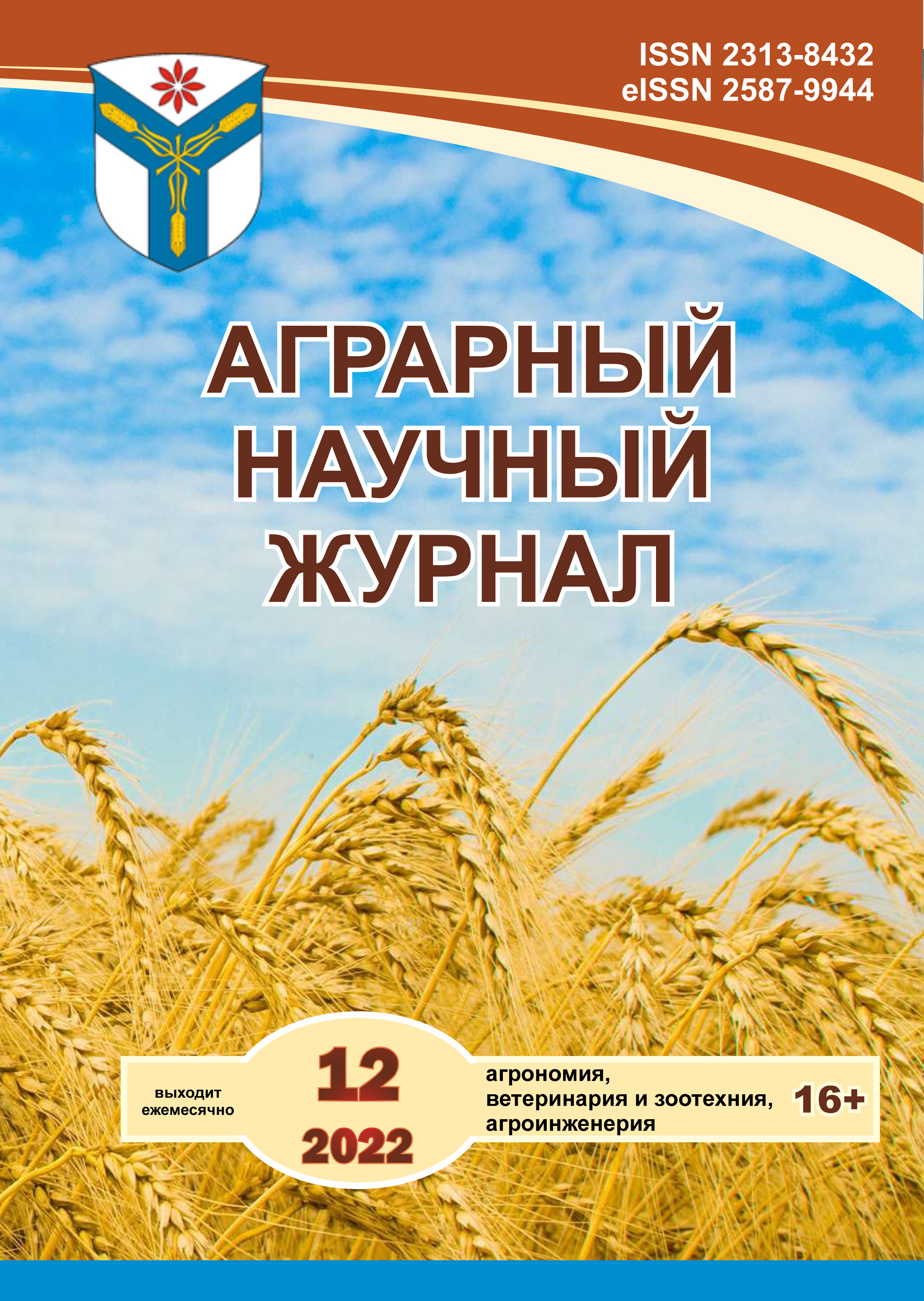Study of tomato breeding forms based on a complex of biological and economic characteristics
DOI:
https://doi.org/10.28983/asj.y2022i12pp10-14Keywords:
tomato, selection, selected forms, variety, yield, economicAbstract
In Dagestan, there are local varieties of tomatoes that have valuable economic and biological characteristics: good yield, excellent taste qualities of fruits, high technological qualities, etc. In this regard, the Apple variety is of interest. However, the Apple variety is uneven and represents a motley population. There are deviations – low-yielding, weak-leaved, strongly exposed to sunburn, with different fruit shapes from rounded to flat. Fruit ripening also occurs at different times. Some plants bear fruit early, others-late. The research was carried out in order to improve the local Apple variety by the method of intra-variety family selection. The forms that meet the set goals are highlighted. These include numbers 22.43 and 56 from the early–maturing group, mid–late - 1a, 3, 3a, and 6a. Early–ripening forms 22, 43 and 56 had an advantage over the control in yield by 4.0 - 12.4 t/ha, i.e. by 7.1 - 22.1%, yield of commercial fruits by 5.9 -14.4t/ha or by 11.6 -28.5%, early yield by 1.4 – 3.7 t/ha. Mid-late - 3a, 1a, 3, 6a, had a yield higher by 5.0 – 11.3 t/ha or 10 -11.3%, the yield of commercial fruits was 6.8 -12.8 t/ha or 13.4 – 25.3% more than the control. According to the early harvest, number 6a stood out. Its harvest for the first collections was obtained above the control by 7.8 t / ha.
Downloads
References
Ахмедова П. М., Велижанов Н. М. Оценка коллекционного материала сортов томата в условиях Дагестана в целях выделения наиболее перспективных форм для селекции томата // Овощи России. 2022. № 1. С. 46–50.
Отечественные гибриды томата для юга России / Т. А. Терешонкова [и др.] // Картофель и овощи. 2016. № 4. С. 5–38.
Признаки, разрабатываемые при селекции гибридов F1 томата типа «биф» / Н. Ф. Тенькова [и др.] // Овощи России. 2020. № 4. С. 55–59.
Эколого-климатические характеристики атмосферы в 2015 г. по данным метеоро-логической обсерватории МГУ имени М. В. Ломоносова / К. В. Авилова [и др.]; под ред. О. А. Шиловцевой. М. : МАКС Пресс, 2016. 268 с.
Потанин В. Г., Алейников А. Ф., Степочкин П. И. Новый подход к оценке экологической пластичности сортов растений // Вавиловский журнал генетики и селекции. 2014. Т. 18. № 3. С. 548–552.
Physiological, biochemical, and molecular mechanisms of heat stress tolerance in plants / M. Hasanuzzaman et al. // International journal of molecular sciences. 2013;14(5):9643–9684.
Бунин М. С., Монахос Г. Ф., Терехова В. И. Производство гибридных семян овощных культур. М.: Изд-во РГАУ – МСХА имени Тимирязева, 2011. 182 с
Авдеев А.Ю. Наследование признаков у гибридов первого поколения томатов. Перспективные гибриды // Актуальные вопросы природопользо-вания в аридной зоне Сев.-Зап. Прикаспия: сб. тр. Прикасп. науч.-исслед. ин-т аридного земледелия. М., 2012. С. 141–144.
Гурин М. В., Крутько Р. В. Сопряжённая изменчивость хозяйственно ценных признаков у томата // Современные тенденции в селекции и семеноводстве овощных культур. Традиции и перспективы: сб. тр.; Всерос. науч.-исслед. ин-т селекции и семеноводства овощных культур. М., 2012. С. 213–221.
Методические указания по селекции сортов и гибридов томата для открытого и защищенного грунта. М.: ВНИИССОК, 1986. 64 с.
Доспехов Б. А. Методика полевого опыта. М., 1979. 414 с.
Downloads
Published
Issue
Section
License
Copyright (c) 2022 The Agrarian Scientific Journal

This work is licensed under a Creative Commons Attribution-NonCommercial-NoDerivatives 4.0 International License.








